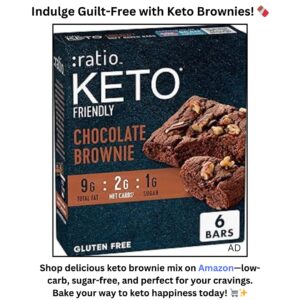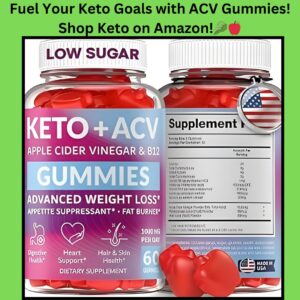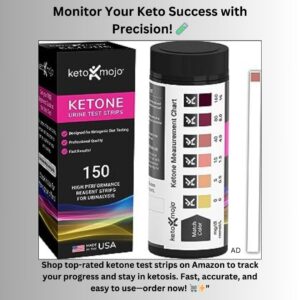Keto Diet for Vegetarians: A Comprehensive Guide to Low-Carb, Plant-Based Eating

The ketogenic diet, commonly known as the keto diet, has gained immense popularity in recent years for its ability to help people lose weight, improve mental clarity, and even manage certain health conditions. The diet is typically high in fats, moderate in proteins, and very low in carbohydrates. However, for vegetarians, following a keto diet can seem challenging due to its reliance on animal-based fats and proteins. But fear not! Keto diet for vegetarians is not only possible but can also be incredibly effective and nutritious.
In this comprehensive guide, we’ll explore how vegetarians can successfully follow a keto diet. We’ll dive into the basics of the keto diet, discuss vegetarian-friendly keto foods, provide meal planning tips, and offer delicious recipe ideas. By the end of this post, you’ll have all the tools you need to embark on your keto vegetarian journey with confidence.
What is the Keto Diet?
The ketogenic diet is a high-fat, low-carbohydrate eating plan that forces the body into a state of ketosis. In ketosis, the body burns fat for energy instead of carbohydrates, which can lead to significant weight loss and other health benefits.
How Does Ketosis Work?
Under normal circumstances, the body’s primary source of energy is glucose, which comes from carbohydrates. However, when carbohydrate intake is significantly reduced, the body starts to break down fats into molecules called ketones, which are then used as an alternative fuel source. This metabolic state is known as ketosis.
Benefits of the Keto Diet
The keto diet offers several potential benefits, including:
- Weight Loss: By shifting the body’s energy source from carbohydrates to fats, the keto diet can help with fat loss, particularly around the abdomen.
- Improved Mental Clarity: Many people report increased focus and mental clarity on the keto diet, likely due to the steady supply of energy from ketones.
- Better Blood Sugar Control: The keto diet can help stabilize blood sugar levels, which is beneficial for people with type 2 diabetes or insulin resistance.
- Increased Energy Levels: Once the body adapts to burning fat for fuel, many people experience more consistent energy levels throughout the day.
Can Vegetarians Follow a Keto Diet?
Yes, vegetarians can successfully follow a keto diet with careful planning and a focus on high-fat, low-carb plant-based foods. The key challenge for vegetarians is to find suitable protein sources that fit within the keto guidelines. Traditional keto diets often rely heavily on animal products like meat, eggs, and dairy, but vegetarians can substitute these with plant-based alternatives.
Key Principles for a Vegetarian Keto Diet
To follow a vegetarian keto diet, keep the following principles in mind:
- Focus on High-Fat, Low-Carb Foods: The cornerstone of the keto diet is a high intake of fats. Focus on healthy fats from plant-based sources like avocados, nuts, seeds, and coconut oil.
- Moderate Protein Intake: Protein is important for maintaining muscle mass, especially when losing weight. Opt for vegetarian protein sources such as tofu, tempeh, seitan, and low-carb dairy products.
- Limit Carbohydrate Consumption: Carbs should be kept very low to maintain ketosis. Avoid high-carb foods like grains, legumes, and starchy vegetables. Instead, focus on non-starchy vegetables like leafy greens, cauliflower, and zucchini.
- Incorporate Keto-Friendly Vegetables: Vegetables that are low in carbs but high in fiber and nutrients should make up a significant portion of your diet. Examples include spinach, kale, broccoli, and Brussels sprouts.
Vegetarian-Friendly Keto Foods
Let’s break down some of the best vegetarian-friendly foods that are low in carbs and high in fats and proteins, making them perfect for the keto diet.
High-Fat Plant-Based Foods
- Avocados: A staple in the keto diet, avocados are rich in heart-healthy monounsaturated fats and contain very few carbs. They also provide fiber, potassium, and various vitamins.
- Nuts and Seeds: Almonds, walnuts, chia seeds, and flaxseeds are great sources of fats, protein, and fiber. However, keep portion sizes in mind as nuts can be calorie-dense.
- Coconut Oil: A popular keto fat, coconut oil contains medium-chain triglycerides (MCTs) that are easily converted into ketones for energy. It’s great for cooking or adding to smoothies.
- Olive Oil: Rich in monounsaturated fats, olive oil is another healthy fat source that can be used for cooking or as a salad dressing.
- Cheese: Many types of cheese are low in carbs and high in fats, making them suitable for a vegetarian keto diet. Options like cheddar, mozzarella, and cream cheese are good choices.
- Full-Fat Dairy: Greek yogurt, sour cream, and heavy cream can be included in moderation, provided they are full-fat and low in carbs.
Vegetarian Protein Sources
- Tofu and Tempeh: These soy-based products are excellent sources of protein and can be used in a variety of dishes. Tofu is versatile and can take on the flavors of the ingredients it’s cooked with, while tempeh has a nutty flavor and is higher in protein and fiber.
- Seitan: Made from wheat gluten, seitan is a high-protein meat substitute that is low in carbs. It has a texture similar to meat and can be used in stir-fries, salads, and sandwiches.
- Eggs: If you include eggs in your vegetarian diet, they are an excellent source of protein and healthy fats. Eggs are also highly versatile and can be prepared in many ways to suit different meals.
- Low-Carb Plant-Based Protein Powders: If you find it challenging to meet your protein needs, consider incorporating a low-carb, plant-based protein powder made from pea protein, hemp, or brown rice protein.
Low-Carb Vegetables
- Leafy Greens: Spinach, kale, arugula, and Swiss chard are nutrient-dense, low-carb vegetables that can be used in salads, smoothies, or sautéed as a side dish.
- Cruciferous Vegetables: Broccoli, cauliflower, Brussels sprouts, and cabbage are low in carbs and high in fiber. They can be roasted, steamed, or used as a base for dishes like cauliflower rice.
- Zucchini: Zucchini is a versatile vegetable that can be spiralized into noodles, grilled, or added to casseroles.
- Mushrooms: Mushrooms are low in carbs and add a meaty texture to vegetarian dishes. They can be sautéed, stuffed, or used as a pizza topping.
Meal Planning Tips for a Vegetarian Keto Diet
Meal planning is essential when following a vegetarian keto diet to ensure you get enough nutrients while staying within your carb limits. Here are some tips to help you get started:
1. Plan Your Meals Ahead of Time
Planning your meals in advance helps you stay on track and avoid the temptation of high-carb foods. Create a weekly meal plan that includes breakfast, lunch, dinner, and snacks. Consider batch cooking or prepping ingredients in advance to make meal preparation easier during the week.
2. Track Your Macros
Tracking your macronutrients (fats, proteins, and carbs) is crucial on a keto diet to ensure you’re staying within the right ratios to maintain ketosis. Use a food diary or a mobile app like MyFitnessPal or Carb Manager to monitor your daily intake.
3. Include a Variety of Foods
Eating a variety of foods ensures you get a wide range of nutrients. Rotate your protein sources and include different vegetables and healthy fats in your meals to avoid monotony and nutritional gaps.
4. Focus on Fiber
While the keto diet is low in carbs, it’s important to include fiber-rich foods to support digestive health. Non-starchy vegetables, nuts, seeds, and avocados are good sources of fiber that fit within a keto diet.
5. Stay Hydrated
The keto diet can have a diuretic effect, meaning you may lose more water and electrolytes than usual. Drink plenty of water throughout the day and consider incorporating electrolyte-rich foods like avocados and leafy greens, or using an electrolyte supplement.
6. Don’t Forget About Snacks
Having keto-friendly snacks on hand can help curb hunger and keep you on track. Some easy snack options include cheese slices, nuts, seeds, and keto fat bombs.
Sample Vegetarian Keto Meal Plan
Here’s a sample meal plan to give you an idea of how to structure your meals on a vegetarian keto diet.
Day 1
- Breakfast: Avocado and poached eggs with a side of sautéed spinach and mushrooms.
- Lunch: Zucchini noodles with pesto sauce, topped with grilled tofu and pine nuts.
- Snack: Greek yogurt with chia seeds and a few raspberries.
- Dinner: Cauliflower crust pizza topped with marinara sauce, mozzarella, and roasted vegetables.
2ND DAY
- Breakfast: Coconut milk smoothie with spinach, avocado, and a scoop of plant-based protein powder.
- Lunch: Spinach and feta stuffed portobello mushrooms with a side of mixed greens.
- Snack: Almond butter on celery sticks.
- Dinner: Stir-fried tempeh with broccoli, bell peppers, and coconut aminos, served over cauliflower rice.
Day 3
- Breakfast: Chia seed pudding made with unsweetened almond milk, topped with walnuts and a few blueberries.
- Lunch: Grilled halloumi cheese salad with arugula, cucumber, and a lemon-olive oil dressing.
- Snack: Handful of mixed nuts and seeds.
- Dinner: Eggplant lasagna with ricotta cheese and marinara sauce, served with a side of roasted Brussels sprouts.
Common Challenges and How to Overcome Them
Following a vegetarian keto diet comes with its own set of challenges, but with the right strategies, you can overcome them and stay on track.
1. Limited Protein Sources
Vegetarians have fewer protein options on a keto diet compared to those who eat meat. To ensure you’re getting enough protein, focus on incorporating a variety of plant-based sources like tofu, tempeh, seitan, eggs, and low-carb dairy products. You can also use plant-based protein powders to supplement your intake.
2. Finding Low-Carb Vegetarian Recipes
Many vegetarian recipes rely on grains, legumes, and starchy vegetables, which are high in carbs and not suitable for a keto diet. To find keto-friendly vegetarian recipes, look for dishes that emphasize low-carb vegetables, healthy fats, and plant-based proteins. There are also numerous keto cookbooks and online resources specifically geared towards vegetarians.
3. Social Situations and Eating Out
Eating out or attending social events can be challenging on a vegetarian keto diet, as options may be limited. When dining out, look for salads with healthy fats like avocado or olive oil, or vegetable-based dishes that can be modified to fit your dietary needs. Don’t be afraid to ask for substitutions or bring your own keto-friendly snacks to social gatherings.
4. Maintaining Nutrient Balance
The keto diet can be restrictive, so it’s important to ensure you’re getting all the essential nutrients your body needs. Focus on eating a variety of vegetables, incorporating nuts and seeds, and considering supplementation if necessary (e.g., vitamin B12 for vegetarians).
Delicious Vegetarian Keto Recipes
Here are a few recipe ideas to help you get started on your vegetarian keto journey:
1. Avocado Egg Salad
- Ingredients:
- 2 ripe avocados
- 4 hard-boiled eggs, chopped
- 1 tablespoon Dijon mustard
- 1 tablespoon mayonnaise (optional)
- Salt and pepper to taste
- Chopped chives for garnish
- Instructions:
- In a large bowl, mash the avocados until smooth.
- Add the chopped eggs, Dijon mustard, mayonnaise, salt, and pepper.
- Mix until well combined.
- Garnish with chopped chives and serve as a salad or on keto-friendly bread.
2. Zucchini Lasagna
- Ingredients:
- 3 large zucchinis, thinly sliced lengthwise
- 1 cup ricotta cheese
- 1 cup shredded mozzarella cheese
- 1/2 cup grated Parmesan cheese
- 2 cups marinara sauce (sugar-free)
- 1 teaspoon dried oregano
- 1 teaspoon dried basil
- Salt and pepper to taste
- Instructions:
- Preheat the oven to 375°F (190°C).
- Lay the zucchini slices on a paper towel and sprinkle with salt. Let sit for 15 minutes to remove excess moisture.
- In a bowl, mix the ricotta cheese, 1/2 cup mozzarella, Parmesan, oregano, basil, salt, and pepper.
- In a baking dish, layer zucchini slices, ricotta mixture, and marinara sauce. Repeat layers until ingredients are used up.
- Top with the remaining mozzarella cheese.
- Bake for 25-30 minutes or until the cheese is bubbly and golden.
- Let cool slightly before serving.
3. Cauliflower Rice Stir-Fry
- Ingredients:
- 1 head of cauliflower, grated into rice-sized pieces
- 1 block of firm tofu, cubed
- 1 cup broccoli florets
- 1 red bell pepper, sliced
- 2 tablespoons coconut oil
- 2 tablespoons soy sauce or coconut aminos
- 1 teaspoon ginger, minced
- 1 clove garlic, minced
- 1/4 cup green onions, chopped
- Sesame seeds for garnish
- Instructions:
- Heat coconut oil in a large skillet over medium heat.
- Add the tofu cubes and cook until golden on all sides. Remove from the skillet and set aside.
- In the same skillet, add ginger and garlic, and sauté for 1-2 minutes until fragrant.
- Add the broccoli, bell pepper, and cauliflower rice, and stir-fry for 5-7 minutes until vegetables are tender.
- Stir in soy sauce or coconut aminos and return the tofu to the skillet. Mix well to combine.
- Garnish with green onions and sesame seeds before serving.
Conclusion: Embrace the Keto Diet for Vegetarians
Following a keto diet for vegetarians is entirely possible with the right approach and a focus on nutrient-dense, low-carb plant-based foods. By incorporating healthy fats, plant-based proteins, and a variety of vegetables, you can enjoy the benefits of the keto diet while adhering to a vegetarian lifestyle. Whether your goal is weight loss, improved energy, or better blood sugar control, the vegetarian keto diet offers a unique way to achieve your health goals.
🌟Remember, meal planning and tracking your macronutrients are crucial for success on the keto diet. By using the tips and recipes in this guide, you can confidently embark on your vegetarian keto journey.
Ready to start your keto diet for vegetarians? Explore our resources and meal plans to begin today! 🌟








